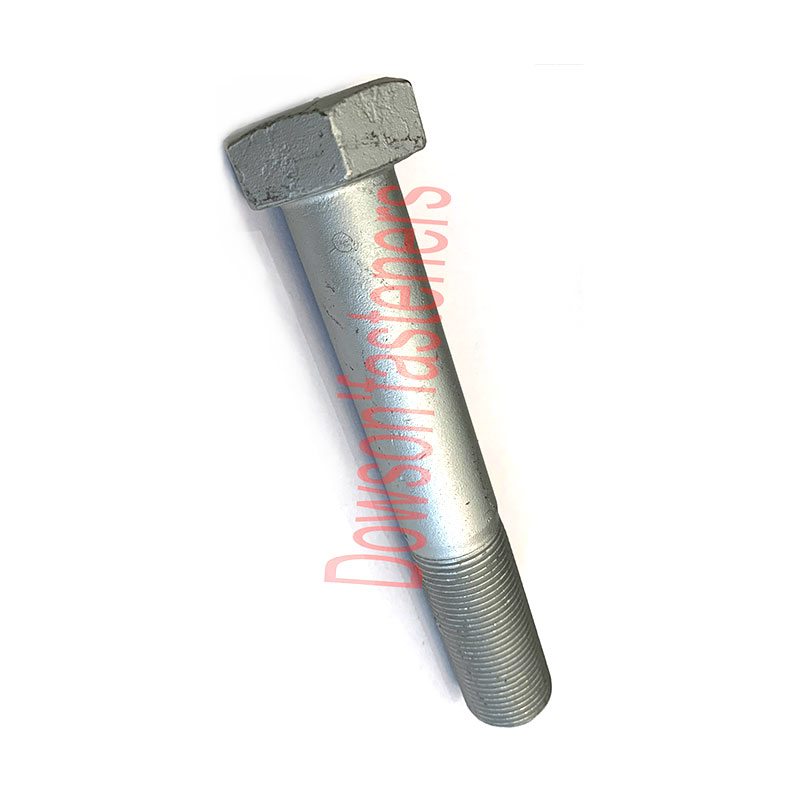Bolting Down the Basics: Understanding Track Bolts and Their Applications
2024-03-18
In the world of construction, transportation, and infrastructure, the reliability and stability of railway tracks are paramount. One crucial component that ensures the secure fastening of rails to ties or sleepers is the track bolt. These specialized bolts play a vital role in maintaining the integrity and safety of railway systems. In this blog, we'll delve into the fundamentals of track bolts, exploring their characteristics, applications, and significance in the realm of railroads.
Understanding Track Bolts:
Track bolts are heavy-duty fasteners designed specifically for securing rails to railroad ties or sleepers. These bolts typically feature a square or hexagonal head and a threaded shaft, allowing them to be tightened securely using a wrench or spanner. Track bolts are manufactured from high-strength materials such as carbon steel or alloy steel to withstand the immense forces and vibrations experienced in railway operations.
Applications of Track Bolts:
1. Railway Construction and Maintenance:
Track bolts are extensively used in railway construction projects to fasten rails to wooden or concrete ties, ensuring stability and alignment along the track. During routine maintenance and track repairs, track bolts are replaced or tightened as needed to maintain track integrity and prevent rail displacement.
2. Railroad Infrastructure:
Track bolts play a crucial role in various railroad infrastructure applications, including bridges, switches, crossings, and turnouts. These bolts secure rails to structural components such as bridge girders, switch plates, and crossing panels, providing structural integrity and stability to the railway network.
3. Heavy-Duty Applications:
In addition to railway tracks, track bolts find applications in heavy-duty industrial settings, such as crane tracks, mine railways, and port terminals. These bolts are used to secure rails to support structures, ensuring safe and reliable operation of heavy machinery and equipment in industrial environments.
4. High-Speed Rail Systems:
With the advent of high-speed rail systems, the demand for track bolts with enhanced performance characteristics has increased. These bolts must withstand higher levels of stress, vibration, and fatigue associated with high-speed train operations, requiring advanced materials and precision engineering.
Key Features and Considerations:
1. Corrosion Resistance:
Track bolts are exposed to harsh environmental conditions, including moisture, humidity, and chemical exposure, which can lead to corrosion and degradation over time. Corrosion-resistant coatings or materials, such as galvanized steel or stainless steel, are often used to prolong the service life of track bolts in outdoor and corrosive environments.
2. Thread Specifications:
Track bolts feature specific thread specifications designed to achieve optimal clamping force and resistance to loosening under dynamic loads. Proper thread engagement and torque tightening are essential to ensure the secure fastening of rails and prevent track defects or failures.
3. Head Designs:
The head design of track bolts may vary depending on application requirements and installation methods. Hexagonal heads provide a larger surface area for wrench engagement and torque application, while square heads offer enhanced stability and resistance to rotation during tightening.
4. Quality Assurance:
Quality control measures, including material testing, dimensional accuracy, and mechanical properties, are critical to ensuring the reliability and performance of track bolts in railway applications. Compliance with industry standards and specifications, such as ASTM (American Society for Testing and Materials) or AREMA (American Railway Engineering and Maintenance-of-Way Association), is essential for track bolt manufacturers.
Conclusion:
Track bolts are indispensable components in railway construction, maintenance, and infrastructure, providing secure fastening and stability to railway tracks and associated structures. With their robust design, high-strength materials, and precision engineering, track bolts play a crucial role in ensuring the safe and efficient operation of railway systems worldwide. Whether in traditional railroads, high-speed rail networks, or industrial applications, track bolts remain essential elements in the foundation of modern transportation and infrastructure systems.



